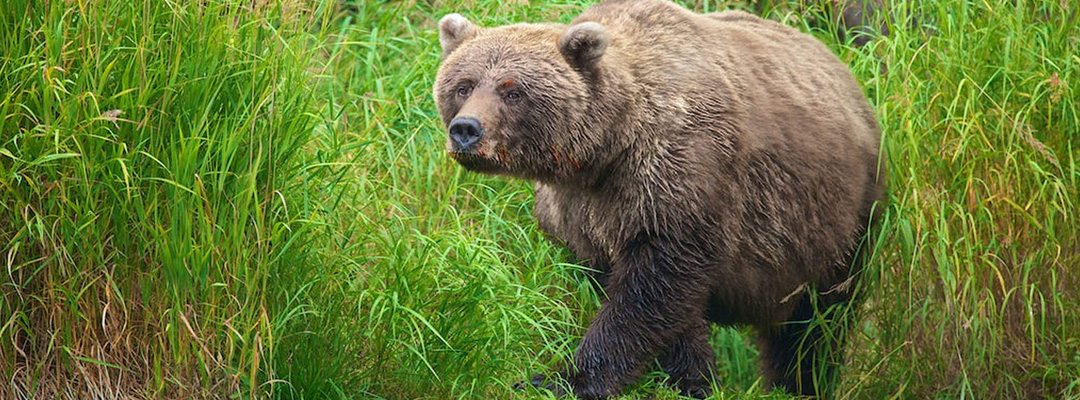
How did Grizzly Bears get their name?
Grizzly Bears are a subspecies of the brown bear and named after their grizzled hair that often takes on a golden essence among the darker brown hues. The term “grisly” is also one that is sometimes synonymous with the grizzly bear since they are an animal species often met with a reputation, deserving or not, that provokes fear. Nonetheless, the grizzly bear has been studied for many, many decades, wielding a plethora of remarkable traits and behaviors that make them wholly entrancing.
How to recognize the Grizzly Bear?
In addition to the grizzled fur, the grizzly bear has a list of distinguishing features. An attribute that separates the grizzly from the commonly known black bear, is the prominent musculature or “hump” found upon the shoulders of the grizzly bear; the black bears’ is not as noticeable. Grizzlies also tend to weigh more than the black bear, averaging 800 pounds and then measuring up to 8-feet in length; with large paws and longer claws, the grizzly bear is also a decent climber as well as a digger, which is something to note for later. The grizzly bear is, however, similar to the black bear in disposition, being wary of people, unless they appear to be a threat to the grizzlies or their cubs, and a renowned predator among those who they share their habitat with. Wolves and cougars leave their prey amid the mere intimidation factor alone, when it comes to grizzly bears who are incredibly powerful. Though large in size, grizzlies can run up to speeds of 30 mph, too.

Are Grizzly Bears independent from one another?
Grizzly bears do prefer solitary. But there are exceptions to this. Being omnivores, the grizzly bear is able to survive off of the land with a diet consisting of nuts, berries, roots, and other mammals, both big and small. Grizzles are native to the forests of North America, with a presence in Canada and Alaska, along with Wyoming, Montana, Utah, and Washington. Alaska, in particular, holds the opportunity for salmon (a grizzly favorite), forcing grizzly bears together for the spawning season when the salmon are traveling upstream; they found something of a sleuth (the term for a group of bears). This late springtime tradition comes just before mating time is to begin for the grizzlies.

When does breeding season begin for the Grizzly Bear?
Breeding season for the grizzly bear begins in May and lasts into June, following 15 days of courtship. Grizzlies will seek out dens in October or November and this is when the embryotic stage of the cub begins within the womb of the mother bear. Grizzly bears will scope out hillsides that they will burrow their dens within, being ones to dig the area where they will stay for the winter and during their 5 to 7 month hibernation. The length of the hibernation is subjective and in relation to the climate; in warmer areas, the bears will hibernate for a much shorter time, if they choose to at all. Moreover, during the winter hibernation, the mother bear will have her cubs after a gestation period lasting 235 days or almost 7 ½ months. Grizzlies tend to have one or two cubs at a time; with the cubs born blind and weighing less than a pound, they heavily rely on the mother their first month. In April, the bears will emerge from their dens and embrace new seasons.

Is the Grizzly Bear endangered?
The grizzly bear is not currently on the endangered species list, which was not so much the case before there were conservation efforts made to protect particular animals. The grizzly bear is regarded as “big game” in the hunting world, recognized as a grand trophy of sorts; this is one reason as to why grizzly populations were negatively affected and severely depleted at the beginning of the 20th Century. The California Grizzly Bear, a subspecies of the grizzly bear, fell victim to excessive hunting practices at around this time; there was no saving the bear from becoming extinct. In spite of this, there have been discussions of delisting or removing the grizzly bear from remaining an animal specifies protected by U.S. Fish and Wildlife Services. If the grizzly bear were to become delisted, excessive hunting practices could very well result in the extinction of the grizzly bear. Today, grizzlies are still protected, with their numbers being closely monitored as they continue being a symbol of both beauty and strength.
